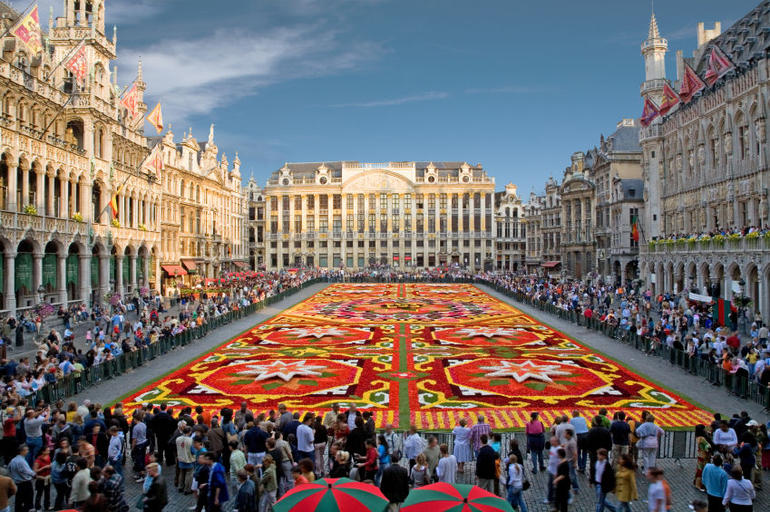1. Svalbard, Norway

This archipelago belonging to Norway is fully inside the Arctic Circle. The best place on Earth for spotting polar bears, Svalbard's islands are mostly made out of ice. There are many iceberg waterfalls like the one in the picture. A trip to Svalbard will surely be an adventure full of beautiful scenery and one-of-a-kind wildlife.
2. Pamukkale, Turkey

These pools in the picture were naturally formed by calcium deposits. They are also known as petrified calcium waterfalls. In Pamukkale, there are also 17 hot springs. Everyone must remove their shoes before stepping into a pool in order to keep the waters pristine. The best time to travel here in is the summer, when the water is warm. This is technically in the Asian part of Turkey, but these pools are so beautiful that I decided to include them anyway.
3. Skaftafell Ice Cave, Iceland

This is truly one of the most stunning places on the planet. Adventurer or not, everyone can appreciate its beauty. The only way to see the cave is to join a trip to the glaciers in Vatnajokull National Park. The safest time to visit is in the winter, since the ice can melt and fall during the summer.
4. Greek Isles, Greece

This turquoise water is only found in a few places around the world, and one of those especially beautiful places is the Greek Isles. The beach in the picture is on the island of Zakynthos. There are many other lovely islands including Corfu, Crete, and the world-famous Santorini. Cruises are offered that explore many of these breathtaking islands.
5. Swiss Alps, Switzerland

Supposedly the most scenic mountains in the world, this place is a skier's paradise. Perhaps the most famous peak, the Matterhorn (in the picture), is the most beautiful after all. The best experience in the Swiss Alps is witnessing a colorful mountain sunset. I am a passionate skier, so hitting the slopes up here is definitely on my bucket list.
6. Bigar Waterfall, Romania

This unique moss waterfall is still mostly unknown to the outside world. It looks slightly unreal the first time one looks at it, as though it popped right out of a fairy tale. But, I promise you, this does exist, and no editing was done to the photo. One day, this mystical forest waterfall might become as famous as Niagara Falls.
7. Crooked Forest, Poland

Take a look at these trees, and you'll notice that something is off. The Crooked Forest is a grove of 40 seemingly crooked pine trees. No one is exactly sure why these trees grew this way. The trees could have bent that way naturally, or humans could have intervened. Whichever you decide to believe, this forest will always be a mystery.
8. Sorvagsvatn Lake, Faroe Islands, Denmark

This lake has an interesting location; it is situated on a cliff right above the Atlantic Ocean. The lake is close enough to the edge that it looks spectacular, but far enough so that it doesn't overflow, creating a narrow walking path. Straddling the path in between the lake and the 100-foot cliff is definitely something a daredevil should try.
9. Blue Grotto, Bisevo, Croatia

The water in this cave appears to be glowing blue. This is because the sunlight from the opening shines in and reflects off of the water to create a dim blue light. The entrance was artificially made, as the cave only had one natural entrance, and that was underwater. Now, the cave receives 10,000 tourists each year.
10. Giant's Causeway, Northern Ireland

Giant's Causeway was created by an ancient volcanic eruption. It is an area made up of about 40,000 hexagonal columns of basalt that interlock, creating a very unusual landscape. There is an identical group of basalt columns located across the sea on the Scottish island of Staffa, which influenced the legend that giants created the causeway by running across the sea.
Well, there you have it! Your itinerary is set for your next nature trip to Europe. Did I forget any places? Comment below, and don't forget to check out my Pinterest page!

